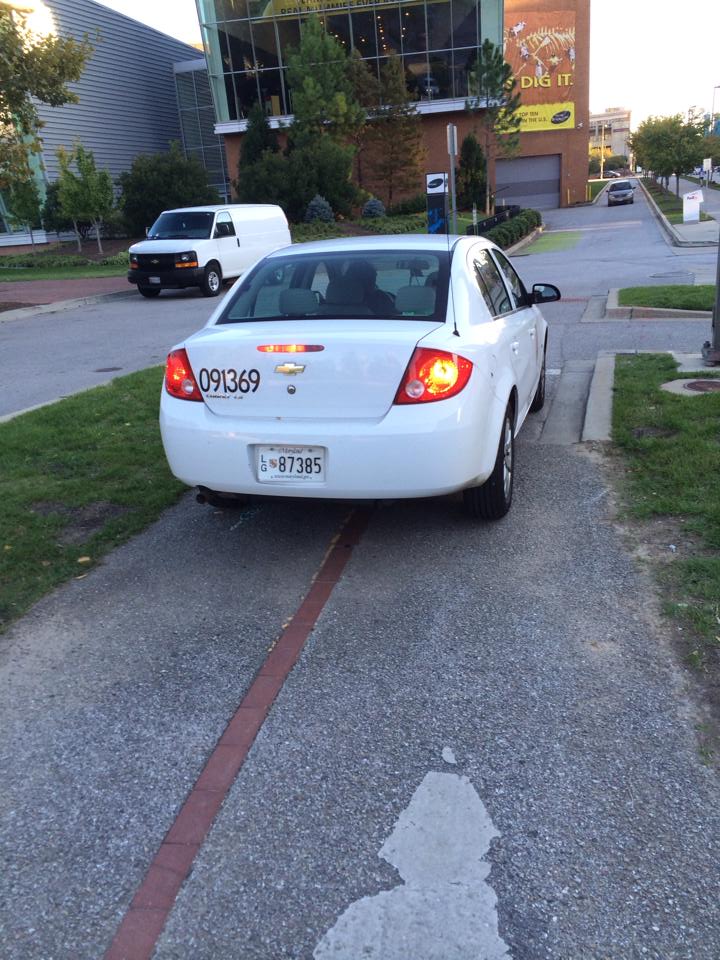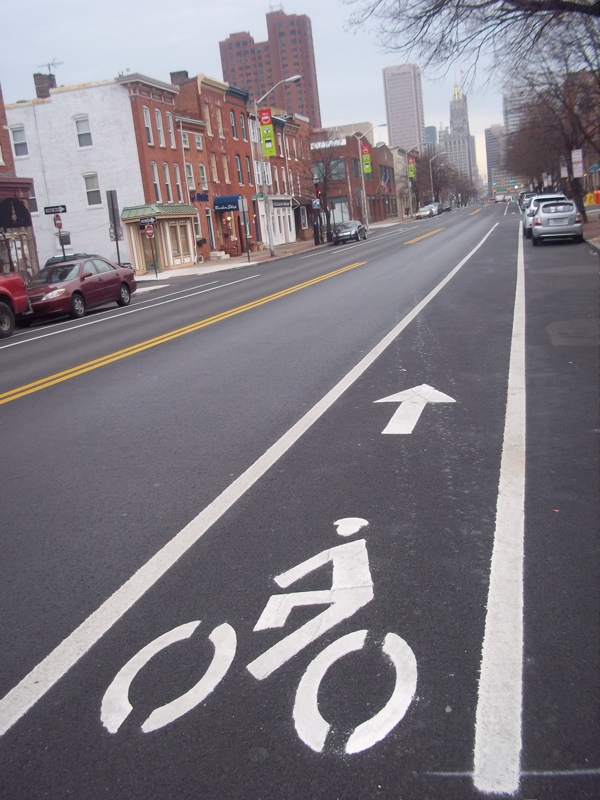We think there is a better approach. If the goal is to make Belair Rd a corridor where people want to stop, shop, eat, and play, traffic speed needs to be reduced. It needs to be safe to walk, bike, park, and take the bus.
DOT contends the only way to provide proper bike infrastructure is to remove parking. We don't agree. Businesses need parking to survive. But they also need safe pedestrian and bicycle access to thrive.
Removing one travel lane each direction on Belair Road would serve the same purpose as a median. It would reduce crossing distance, and it would calm traffic. More importantly, it would free up road space to be used for things that would make the corridor an attractive place to stop and visit, rather than to drive through as quickly as possible.
Yes, eliminating a lane of traffic in each direction on Belair Road would mean reducing road capacity during rush hour. We believe that access and safety for people walking and riding bicycles along the Belair Road corridor are more important for the development of human-friendly urban communities than traffic speed and capacity during a short portion of each weekday. People should not have to take their lives in their hands to walk or ride a bicycle along or across Belair Road simply for the convenience of people driving during rush hour -- many of whom do not live in the city. For people driving into Baltimore from the northeast, there are plenty of other roads to use -- Route 40, I-95, Harford Road, Perring Parkway, Loch Raven Boulevard, etc. If one of our preferred alignments were implemented, there might be some congestion and confusion at first, but people will quickly learn to drive on other roads if their destinations are not along Belair Road.
 Over the weekend, there was a post in the Bikemore Facebook discussion group documenting the illegally-parked city vehicle you see above.
Over the weekend, there was a post in the Bikemore Facebook discussion group documenting the illegally-parked city vehicle you see above.







